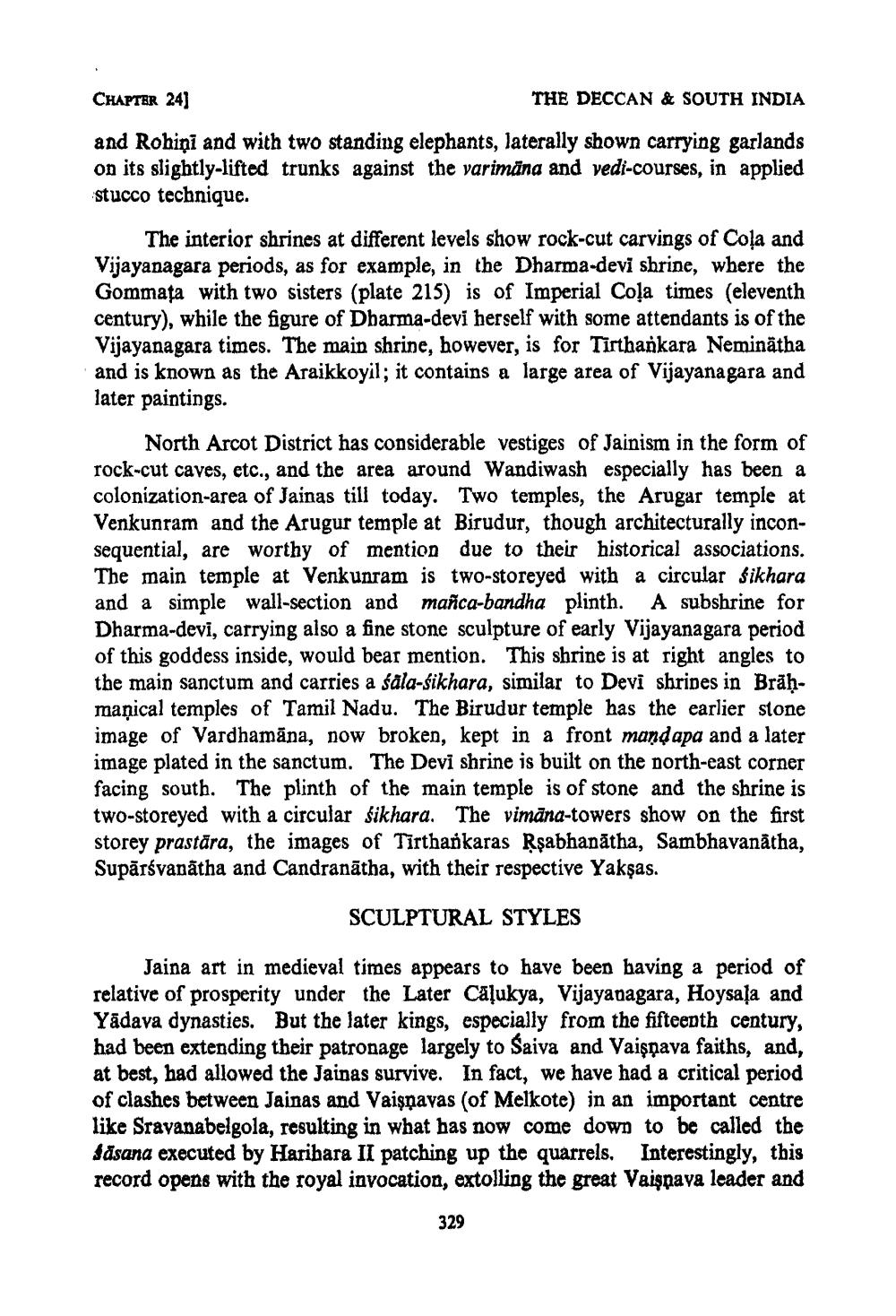________________
CHAPTER 24)
THE DECCAN & SOUTH INDIA
and Rohiņi and with two standing elephants, laterally shown carrying garlands on its slightly-lifted trunks against the varimana and vedi-courses, in applied stucco technique.
The interior shrines at different levels show rock-cut carvings of Cola and Vijayanagara periods, as for example, in the Dharma-devi shrine, where the Gommata with two sisters (plate 215) is of Imperial Cola times (eleventh century), while the figure of Dharma-devi herself with some attendants is of the Vijayanagara times. The main shrine, however, is for Tirthankara Neminātha and is known as the Araikkoyil; it contains a large area of Vijayanagara and later paintings.
North Arcot District has considerable vestiges of Jainism in the form of rock-cut caves, etc., and the area around Wandiwash especially has been a colonization-area of Jainas till today. Two temples, the Arugar temple at Venkunram and the Arugur temple at Birudur, though architecturally inconsequential, are worthy of mention due to their historical associations. The main temple at Venkunram is two-storeyed with a circular Sikhara and a simple wall-section and manca-bandha plinth. A subshrine for Dharma-devi, carrying also a fine stone sculpture of early Vijayanagara period of this goddess inside, would bear mention. This shrine is at right angles to the main sanctum and carries a śåla-sikhara, similar to Devi shripes in Brāhmanical temples of Tamil Nadu. The Birudur temple has the earlier stone image of Vardhamāna, now broken, kept in a front mand apa and a later image plated in the sanctum. The Devi shrine is built on the north-east corner facing south. The plinth of the main temple is of stone and the shrine is two-storeyed with a circular Sikhara. The vimāna-towers show on the first storey prastāra, the images of Tirthankaras Rşabhanātha, Sambhavanátha, Supārsvanātha and Candranātha, with their respective Yakşas.
SCULPTURAL STYLES
Jaina art in medieval times appears to have been having a period of relative of prosperity under the Later Cāļukya, Vijayanagara, Hoysala and Yādava dynasties. But the later kings, especially from the fifteenth century, had been extending their patronage largely to Saiva and Vaişpava faiths, and, at best, had allowed the Jainas survive. In fact, we have had a critical period of clashes between Jainas and Vaişpavas (of Melkote) in an important centre like Sravanabelgola, resulting in what has now come down to be called the Sasana executed by Harihara II patching up the quarrels. Interestingly, this record opens with the royal invocation, extolling the great Vaişpava leader and
329




